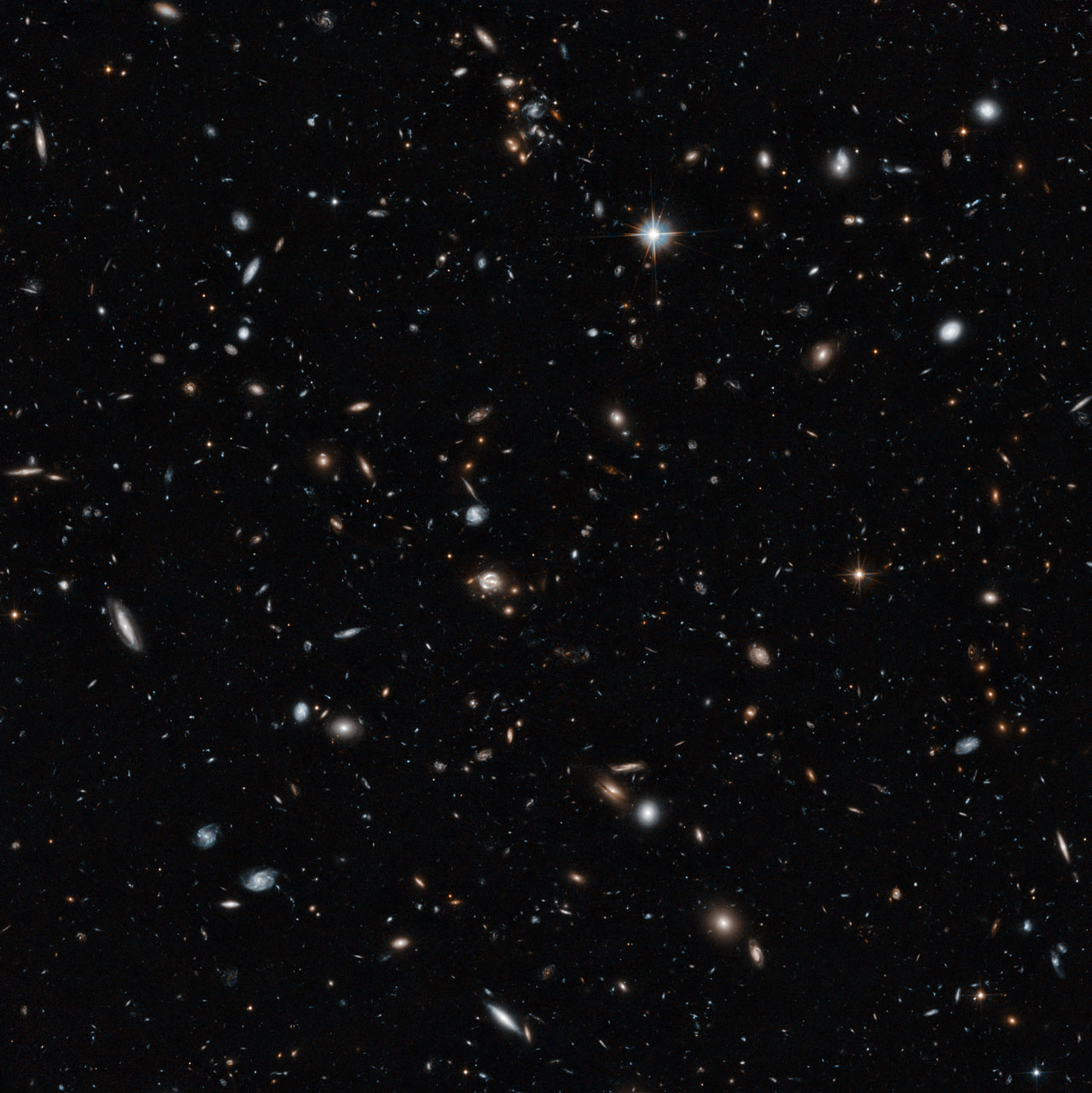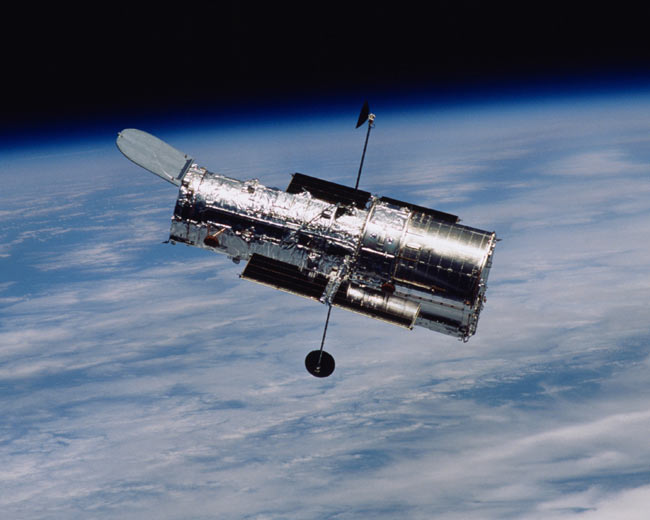A new photo from NASA's Hubble space telescope captures a variety of celestial objects both near and far, providing a glimpse of many different stages of cosmic history all at once.
The Hubble image, released Thursday (April 17), is a 14-hour exposure that shows objects about 1 billion times fainter than the naked eye can make out, researchers said. Most of the galaxies visible in the photo lie less than 5 billion light-years away, but some objects are much more distant.
For example, the photo shows a quasar located 9 billion light-years from Earth, meaning it has taken about two-thirds of the universe's history for the object's light to reach Hubble. (The Big Bang that created the universe occurred 13.8 billion years ago.) [Zoom in on new Hubble photo (Video)]

The most luminous objects in the universe, quasars are incredibly bright galactic cores powered by supermassive black holes that contain millions of times more mass than the sun.
The light from the distant quasar in the Hubble photo is being bent and amplified by a galaxy cluster that lies closer to Earth along the line of sight from this planet — a phenomenon known as gravitational lensing. This cluster, known as CLASS B1608+656, is visible as a small loop near the center of the image.
CLASS B1608+656 isn't the only lensing object in the new photo, which combines observations in visible and infrared light.
Two galaxies — dubbed Fred and Ginger, but more formally known as ACS J160919+6532 and ACS J160910+6532, respectively — are also warping spacetime enough to distort the light emitted by objects behind them, researchers said.
Get the Space.com Newsletter
Breaking space news, the latest updates on rocket launches, skywatching events and more!
Both Fred and Ginger appear close to CLASS B1608+656 in the Hubble photo. But only Fred is actually close to the cluster, researchers said; Ginger is much nearer to Earth.

![Find out how Hubble has stayed on the cutting edge of deep-space astronomy for the past 20 years here. [See the full Hubble Space Telescope Infographic here.]](https://cdn.mos.cms.futurecdn.net/qK2xWDesnWUEsoFccAR7pM.jpg)
The Hubble image is new to the general public but not to scientists, who have studied it extensively over the years. It was spotted by Adam Kill during the 2012 Hubble's Hidden Treasures competition, which invited contestants to identify the most interesting and beautiful Hubble photos that a wide audience has yet to see.
The iconic Hubble Space Telescope, a joint effort involving NASA and the European Space Agency, launched in April 1990. Astronauts repaired and upgraded the orbiting instrument five times over the years using the now-grounded space shuttle, sharpening Hubble's vision considerably.
Officials have said they plan to operate Hubble through at least 2020. That would allow some scientific overlap with the telescope's successor, NASA's $8.8 billion James Webb Space Telescope, which is currently scheduled to launch in 2018.
Follow Mike Wall on Twitter @michaeldwall and Google+. Follow us @Spacedotcom, Facebook or Google+. Originally published on Space.com.
Join our Space Forums to keep talking space on the latest missions, night sky and more! And if you have a news tip, correction or comment, let us know at: community@space.com.

Michael Wall is a Senior Space Writer with Space.com and joined the team in 2010. He primarily covers exoplanets, spaceflight and military space, but has been known to dabble in the space art beat. His book about the search for alien life, "Out There," was published on Nov. 13, 2018. Before becoming a science writer, Michael worked as a herpetologist and wildlife biologist. He has a Ph.D. in evolutionary biology from the University of Sydney, Australia, a bachelor's degree from the University of Arizona, and a graduate certificate in science writing from the University of California, Santa Cruz. To find out what his latest project is, you can follow Michael on Twitter.









